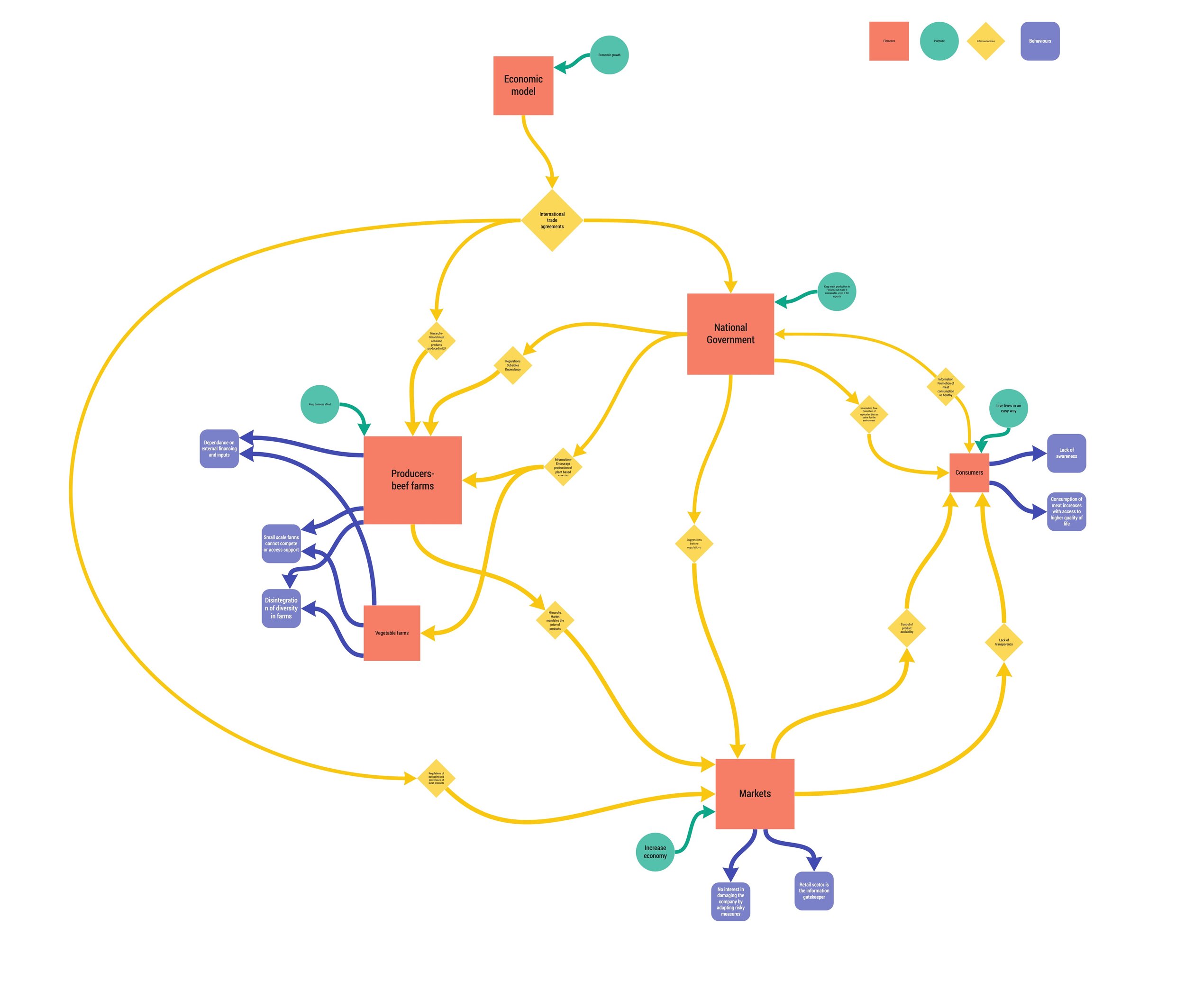
Climate Friendly Food System- Supporting the Finnish adult population in transitioning towards a more climate-friendly diet, in line with national nutrition recommendations.
Client: Ministry of Agriculture and Forestry in partnership with Climate KIC
Year: 2020
Place: Helsinki, Finland
Members of the team: Andrea Gilly, Atiyeh Gholami, Emilia Laine, Miia Herzon & Stella Siitonen.
BACKGROUND
The Ministry of Food and Agriculture launched a "Climate-friendly food programme" at the beginning of 2020. The programme aims to support the work of creating a more climate-friendly food system. It focuses on reducing unnecessary emissions from the field to the table, especially those related to food consumption. The programme has 8 areas of focus that go from 1) production and the impact it has on soils, to 8) the consumption of products such as meat, which are known to contribute to climate change.
PROJECT
Our focus was to use systems thinking and system innovation methodologies. The objective was to understand the problem from different perspectives. We defined the main areas of interest: Meat consumption and masculinity, dietary habits, sustainable food production trends and behaviour, and behavioural economics. We conducted thorough research in these areas.
Using visual tools, we started creating a map to represent the system. This was very important for us because we were able to identify the main challenges and communicate them to the client.
Once we had all the information we needed, we had a workshop with the client. The goal of the workshop was to outline the steps to align the work that is done, with the vision of the future –having in mind the challenging areas to consider–. In the workshop, we used backcasting to create a roadmap that can aid the ministry in reaching the desired impact.
The results were presented to the different departments in the ministry working with the Climate-Friendly Food Programme. Then, we facilitated a discussion to debate the findings and hear the different voices. The objective was to encourage a discussion that could potentially inspire change.
CHALLENGES & INSIGHTS
We focused on three main findings:
1) Retailers are the gatekeepers of information. This means they are the ones closest to individuals and dictate decision-making through marketing and nudging. The lack of regulation in the market allows retailers to have the freedom to choose how to sell.
2) Producers are stuck in loopholes of not being able to improve production because of subsidies. This is not to say subsidies are bad, however, they are often designed in a way that creates dependency rather than transformation.
3) Individuals do not change habits because it is hard, and because there are no systems that support a positive change.
LEARNINGS
I developed a methodology to visualize a system, inspired by Donella Meadows' work. Part of our goal was to visualise a system to highlight where the problems actually are and devise potential levers to intervene and create positive change. I spent a lot of time reading about systems thinking and –though it is nothing new– I used the knowledge to create a way to easily visualize the information we were gathering. This was very fruitful as it not only helped us to communicate the problem but also helped us understand the places where the flow of information and the “interconnections” were being blocked or lacking.

